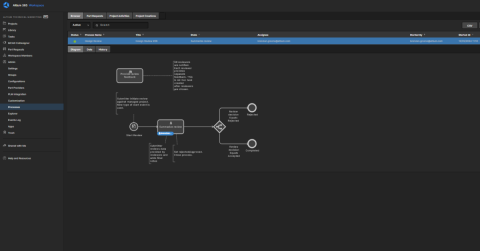Syncing Components to a Local Database
Summary:
This video demonstrates how to keep parameters of your components in Altium 365 in sync with a local database. The video shows the step-by-step process to do this and begins by going to extensions and updates to configure the custom data synchronization for a component. This is done by selecting the data source, such as a DB Lib, an Access File, an Excel File, a CSV file, or a connection string from a MySQL Database and pasting the data from Altium Designer into a new spreadsheet.
Then a parameter and a status field are added to the spreadsheet along with a new diode component before the file is saved and opened in Altium Designer. After the spreadsheet is enabled, these recently created parameters are added to the components in Altium Designer and the revision number is changed for each updated component. This system can also be automated to transfer database updates to Altium 365, enabling sound routine component library maintenance in the system.
Transcript:
00:00:00:00 - 00:00:37:08
With Altium 365 Pro you can keep the parameters of your components that you store in Altium 365 in sync with the parameters from a local database. To do this, you need to go to Altium Designer. At first, you have to go to extensions and updates. In extensions and updates, you find configure where you can enable custom data synchronization. This custom data synchronization gives you an additional menu item and a file.
00:00:37:09 - 00:00:43:07
Component synchronization configuration.
00:00:43:08 - 00:01:08:03
Here you can select the data source. Could be a DB lib, an access file, an excel file, comma separated values file, or even a connection string to read data out of your MySQL database. For this example, I will simply have my current diodes group and extend the data a little bit with a status parameter and a PLM parameter.
00:01:08:04 - 00:01:24:05
If I select everything to control C, go to a certain folder and add a new file.
00:01:24:06 - 00:01:43:13
Paste, and I got my data over here. Name and description. I want to add a new parameter PLM. Part number and a status field.
00:01:43:14 - 00:01:50:14
Approved. And a PLM parameter is 001.
00:01:51:00 - 00:02:02:03
Okay, that does it.
00:02:02:04 - 00:02:15:14
Okay. Additional data. And you can see that I made an additional line. I'm going to create one new component. It will be a one n 4002.
00:02:16:00 - 00:02:36:10
My new diode and it will even have a manufacturer and an manufacture part number. It will be on semi.
00:02:36:11 - 00:02:46:12
All right. I'll put this there and save it.
00:02:46:13 - 00:03:09:01
All right. So I made my data set with a lot of existing components. And one new that doesn't exist yet. We're going to read this.
00:03:09:02 - 00:03:16:07
MySync
00:03:16:09 - 00:03:29:10
All right. We need the properties panel to enable the table.
00:03:29:12 - 00:03:36:09
And I probably need to close it.
00:03:36:10 - 00:04:05:05
There we go. We have to set which component type it will be. It will be diodes. It can use the component template for diodes, which is good. And the key parameter will be name. So I will recognize existing components based on the name. It will end up being component diode. One level revisioning scheme name will be name of my parameters over here that I want to fill in PLM part number.
00:04:05:05 - 00:04:29:12
It will be a special parameter which will be an item level parameter. This means that it's added to the item and not to the item revision. This means that you cannot use it. You cannot change it in Altium Designer. And it belongs to the item and we're going to add the manufacturer and a manufacturer part number. Manufacturer and manufacturer
00:04:29:13 - 00:04:46:11
Part number for my new component. It will be my on semi. All right. We're going to add these parameters to the components using this execute button.
00:04:46:12 - 00:04:57:03
So as we can see currently we have 31 components.
00:04:57:04 - 00:05:33:01
And it was successful which is good. Refresh got 32 components. And my new diode, Its shown over here. You can see component type diode. It has a description. My new diode. My name is here. It's approved. It has my PLM part number. It has the symbol from the component template. And it has my part choice. How do you do all that?
00:05:33:03 - 00:05:55:04
Do the other components. Look, these are simply updated. So there's a new revision. It's on the revision tree, and it now has the PLM part number. And it has the status field added to it very quickly and easy. When I added such a component.
00:05:55:05 - 00:06:16:04
I can see that all the data is here. And the PLM part number you can see over here, it's dynamic. It can only be changed by the sync. So you need to recognize it by the sync. It cannot be edited over here where the status field can be. So it's an item level parameter. It's not in the revision. It cannot be changed in the revision.
00:06:16:05 - 00:06:39:04
You can do this once in a while. Lets click execute. You could also save this file. And it would enable the schedule button. And here you can make the system run this every day automatically. So that when you have some updates in your local database, they are reflected in Altium 365, in an automatic fashion.



